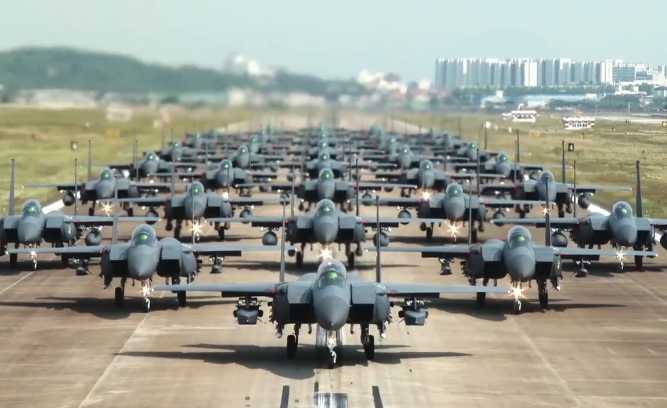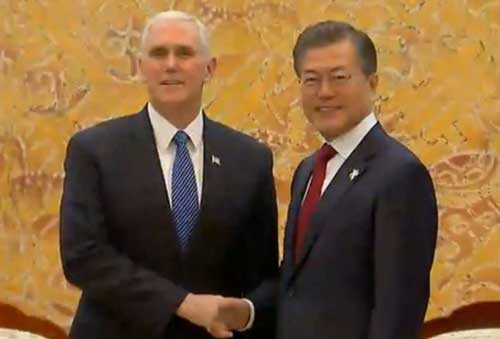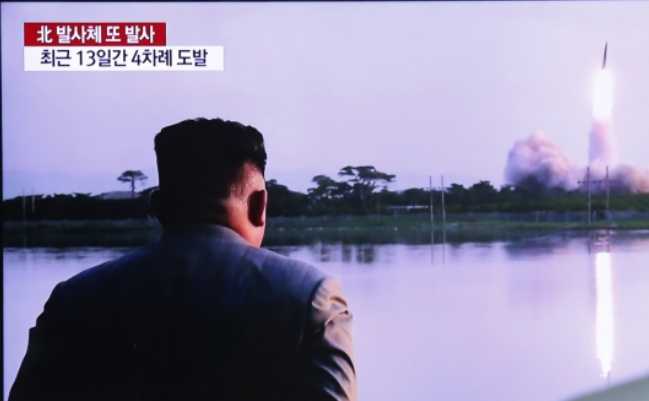
SEOUL, SOUTH KOREA — North Korea has fired its first intercontinental ballistic missile, or ICBM, since displaying its largest show of ICBMs during a late-night military parade last week. The missile, soaring at a lofted trajectory, landed within Japan’s exclusive economic zone, according to Tokyo.
Japan’s Defense Ministry characterized the weapon as an “ICBM-class” missile, noting it traveled for more than an hour before splashing into waters some 200 kilometers west of Hokkaido prefecture’s Oshima-Oshima Island at about 6:27 p.m. The Tokyo government has lodged an official protest against Pyongyang through its embassy in Beijing, Kyodo News reported.
Japanese Prime Minister Fumio Kishida, from his official residence, denounced the launch as an “outrageous act that escalates provocations against the international community.”
The ICBM’s top altitude was similar to—though shy of—North Korea’s last test of its farthest-flying “monster missile.” The November 18 test of the Hwasong-17 missile had reached a top altitude of 6,000 kilometers and traveled a distance of 1,000 kilometers.
This time, the nuclear-armed state’s weapon flew as high as 5,700 kilometers and traversed 900 kilometers, Tokyo said, adding it still had the capacity to reach the continental United States given a normalized trajectory of 14,000 kilometers.
Japan’s chief cabinet secretary, Hirokazu Matsuno, also raised concerns that Pyongyang could continue its provocative actions, including resuming nuclear tests.
Following an emergency meeting, South Korea’s National Security Council on Saturday evening condemned the long-range ballistic missile launch as a “grave violation of U.N. Security Council resolutions” in a statement.
It also criticized Pyongyang’s “clinging” to large-scale military parades and nuclear and missile development at the cost of starvation for its people. Seoul underlined all North Korea stands to gain from such provocations are rigorous economic sanctions by the international community.
According to Seoul’s military, the long-range ballistic missile was launched from the Sunan area near the capital, Pyongyang, at 5:22 p.m. local time.
Saturday’s missile launch follows a warning by North Korea’s Foreign Ministry issued Friday that U.S.-planned actions, including what it claimed were 20 joint military exercises with South Korea this year, would again plunge the Korean Peninsula “into the grave vortex of escalating tension.”
In its statement posted on state-run media Korean Central News Agency, it also blasted Washington for “coercively convoking” a United Nations Security Council meeting “to take issue with [North Korea’s] right to self-defense.”
The Security Council had convened a closed-door meeting in New York on Thursday afternoon to discuss North Korea and nonproliferation, according to its website.
Though little is known of the content of that meeting, U.S. Ambassador Linda Thomas-Greenfield tweeted that a “candid discussion” was conducted on North Korea’s “unlawful WMD [weapons of mass destruction] and ballistic missile advancements. The council cannot stay silent in the face of the growing threat,” she added.
Among those briefing meeting participants was International Atomic Energy Agency Director General Rafael Grossi. He tweeted Thursday, “The DPRK’s nuclear activities continue to be a cause for serious concern… @IAEAorg continues to maintain its enhanced readiness to play its essential role in verifying North Korea’s nuclear programme.”
DPRK is the acronym for North Korea’s official name, the Democratic People’s Republic of Korea.
Joint military exercises
The United States and South Korea are set to engage in a “tabletop” exercise at the Pentagon on Wednesday, which will feature military leaders talking through a coordinated response to a hypothetical North Korean nuclear attack on the Korean Peninsula.
This year’s combined springtime exercises named Freedom Shield is also set to take place next month for 11 days, according to Seoul, under “realistic” nuclear threat scenarios, while drawing lessons from Russia’s ongoing invasion of Ukraine.
North Korea has in recent months expressed pointed threats against South Korea, even as it codified situations where a preemptive nuclear strike would be allowable, during a meeting of its rubber-stamp parliament last September.
On February 8, Pyongyang showcased a new type of ICBM during an elaborate military parade, which several analysts assessed to be a mock-up of a missile that will run on a solid-fueled engine, in a projected shift away from North Korea’s liquid-fueled missile stockpile.
It remains to be seen, however, whether Saturday’s long-range ballistic missile is a new version or a previously tested ICBM.
[content id=”52927″][content id=”79272″]








